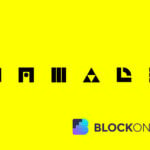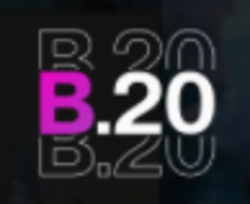As more users adopt cryptocurrencies and decentralized applications (dApps), the need for secure, private, and seamless cross-chain interactions has become increasingly apparent. Enter Namada, a protocol designed to address these concerns head-on.
Namada is a proof-of-stake Layer 1 blockchain that aims to revolutionize the way users transact and interact with digital assets across multiple networks.
By leveraging cutting-edge cryptographic techniques and innovative architecture, Namada enables users to transfer various digital assets, both fungible and non-fungible, with unparalleled privacy and security.
The importance of privacy in the blockchain ecosystem cannot be overstated. While traditional blockchains offer a degree of pseudonymity, transactions are still visible on public ledgers, potentially exposing users’ financial activities to prying eyes.
Namada seeks to solve this problem by providing a robust privacy framework that allows users to transact freely without compromising their confidentiality.
What is Namada?
Namada is a privacy-focused Layer 1 blockchain protocol that enables users to transact with various digital assets across multiple networks while maintaining a high level of confidentiality. It is built as a Cosmos zone, meaning it is compatible with other blockchains in the Cosmos ecosystem, and it also supports interoperability with Ethereum through a trustless bridge.
At its core, Namada is designed to provide users with a secure and private environment for conducting transactions and interacting with decentralized applications (dApps).
It achieves this by employing advanced cryptographic techniques, such as zero-knowledge proofs and multi-asset shielded pools, which allow users to transfer assets without revealing sensitive information on the blockchain.
Namada is part of the Anoma ecosystem, which aims to create a multi-chain future with a focus on privacy and scalability.
As the first fractal instance of Anoma, Namada serves as a proof-of-concept for the broader vision of the Anoma protocol, demonstrating the feasibility and potential of a privacy-centric blockchain architecture.
Key characteristics of Namada include:
- Asset-agnostic privacy: Namada enables users to transact with any supported digital asset, both fungible and non-fungible, while maintaining the same level of privacy across all assets.
- Interoperability: By leveraging Inter-Blockchain Communication (IBC) protocol and a trustless Ethereum bridge, Namada allows users to securely transfer assets across different blockchains.
- Scalability: Namada’s architecture is designed to support high transaction throughput and low latency, ensuring a seamless user experience as the network grows.
- Decentralization: Namada operates on a proof-of-stake consensus mechanism called Cubic Proof-of-Stake (CPoS), which promotes decentralization and security within the network.
How Namada Works
Namada’s architecture is designed to provide users with a private, secure, and interoperable environment for conducting transactions and interacting with decentralized applications (dApps).
Here’s a closer look at the key components and technologies that make Namada work.
Multi-Asset Shielded Pool (MASP) Circuit:
- Namada utilizes an upgraded version of the Multi-Asset Shielded Pool (MASP) circuit, which enables all assets (fungible and non-fungible) to share a common shielded pool.
- The MASP circuit allows users to transfer any supported asset, such as cryptocurrencies, tokens, or NFTs, while maintaining complete privacy.
- Transactions involving different assets are indistinguishable from one another, providing a high level of confidentiality.
Zero-Knowledge Proofs
- Namada employs advanced zero-knowledge proof techniques, such as zk-SNARKs (Zero-Knowledge Succinct Non-Interactive Argument of Knowledge), to validate transactions without revealing sensitive information.
- Zero-knowledge proofs allow users to prove the validity of a transaction without disclosing the sender, receiver, or the amount being transferred.
- This technology ensures that user privacy is maintained while still allowing for secure and verifiable transactions.
Rust Implementation
- The reference implementation of the Namada protocol is built using the Rust programming language.
- Rust is known for its focus on safety, concurrency, and memory efficiency, making it well-suited for building secure and scalable blockchain systems.
- The development of Namada is led by Heliax, one of the development organizations within the Anoma ecosystem.
Consensus Mechanism
- Namada operates on a proof-of-stake consensus mechanism called Cubic Proof-of-Stake (CPoS).
- CPoS is designed to promote decentralization, security, and fairness within the network.
- Validators and delegators participate in the consensus process by staking their tokens, and they are rewarded for their contributions to the network’s security.
Interoperability
- Namada is built to be interoperable with other blockchains, allowing for seamless cross-chain transactions.
- It leverages the Inter-Blockchain Communication (IBC) protocol to enable communication and asset transfers with other IBC-compatible blockchains, such as those within the Cosmos ecosystem.
- Namada features a trustless Ethereum bridge, which allows for secure and private interactions with the Ethereum network and its associated dApps.
Governance
- Namada incorporates a governance mechanism that allows stakeholders to propose and vote on protocol upgrades and changes.
- The governance process is designed to be transparent, inclusive, and community-driven, ensuring that the network evolves in line with the needs and desires of its users.
Cubic Proof-of-Stake (CPoS) Mechanism
Namada’s Cubic Proof-of-Stake (CPoS) is an innovative consensus mechanism that enhances security, decentralization, and fairness within the network. CPoS offers several advantages over traditional PoS systems:
- Automatic compounding of staking rewards, eliminating the need for manual claiming and re-staking.
- Cubic Slashing, which penalizes malicious or negligent behavior by validators, encouraging diverse and independent setups.
- Enhanced security guarantees through automatic detection of accounts responsible for infractions.
- Flexible transaction fees payable in multiple tokens, not just the native token.
These features create a more secure, efficient, and user-friendly staking environment for both validators and delegators. Validators benefit from streamlined rewards and incentives for maintaining secure setups, while delegators can have confidence in the network’s security and the deterrents against malicious behavior.
Use Cases and Applications
Namada’s privacy, interoperability, and scalability features enable a wide range of use cases and applications, including:
Private Decentralized Finance (DeFi)
- Confidential lending, borrowing, and trading.
- Attracting users who value privacy and security.
Confidential Asset Transfers
- Secure and private transfer of fungible and non-fungible tokens across blockchains.
- Useful for high-net-worth individuals, institutional investors, and cross-border payments.
Private Voting and Governance
- Secure and confidential voting systems for DAOs, corporate governance, and public elections.
- Promotes fairness, transparency, and inclusivity in decision-making processes.
Confidential Supply Chain Management
- Tracking and verifying goods movement while maintaining data confidentiality.
- Protects trade secrets and ensures product integrity.
Privacy-Preserving Identity and Credentials
- Selective disclosure of personal information and credentials to trusted parties.
- Streamlines user authentication, background checks, and compliance verification.
Conclusion
Namada is a blockchain protocol designed to provide privacy, interoperability, and scalability. By utilizing advanced cryptographic techniques, such as zero-knowledge proofs and multi-asset shielded pools, Namada aims to offer a solution for users and developers seeking to leverage blockchain technology while maintaining privacy.
Namada’s features include asset-agnostic shielded transfers, shared shielded pools, fast ZKP generation on edge devices, and low transaction fees. These features enable various applications, such as private DeFi, confidential asset transfers, secure voting systems, and privacy-preserving identity solutions.
Namada’s focus on interoperability, through its compatibility with IBC and the trustless Ethereum bridge, allows for cross-chain interactions and aims to contribute to the growth of the interconnected blockchain ecosystem.
As privacy continues to be a concern in the blockchain space, solutions like Namada may play a role in addressing these issues. The success of Namada will depend on its ability to deliver on its promised features, foster a strong community, and drive adoption.
For those interested in learning more about Namada, there are several resources available, including the official website, blog, community channels, and opportunities to participate in the testnet or contribute to the codebase.






































